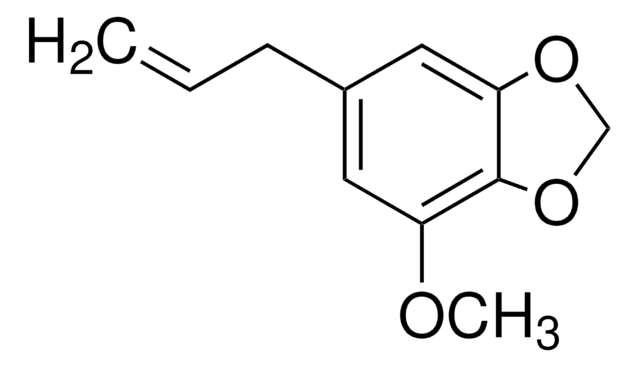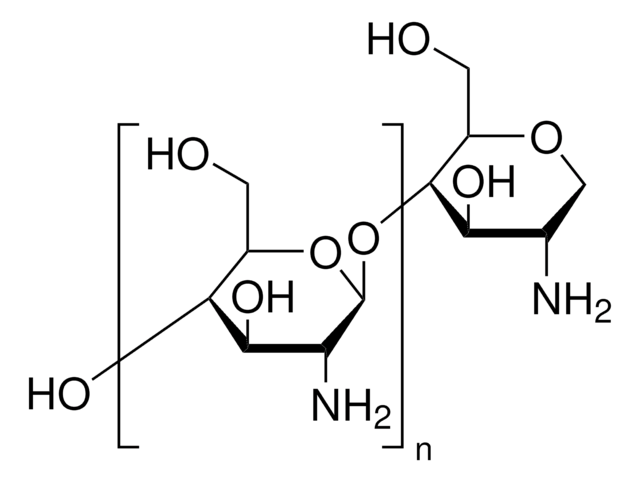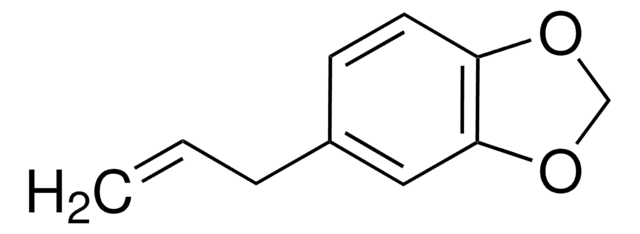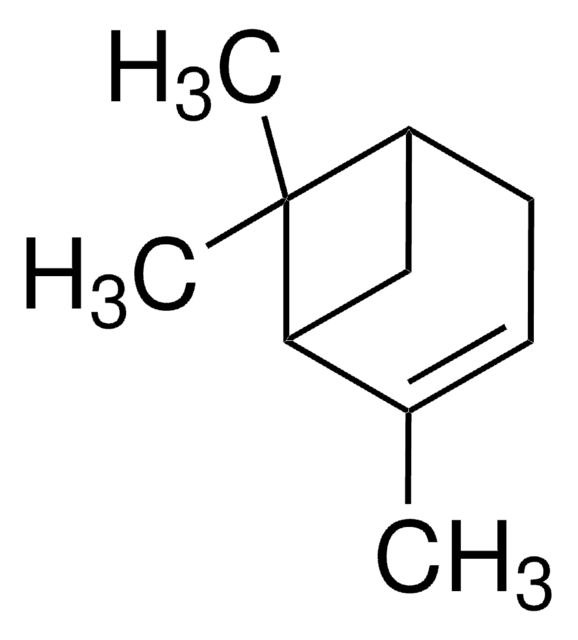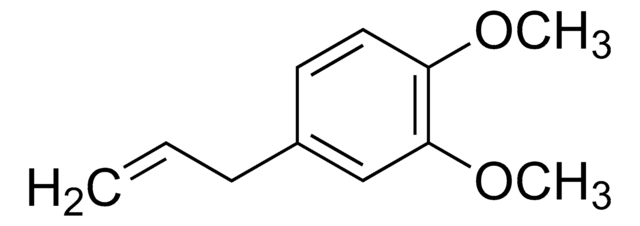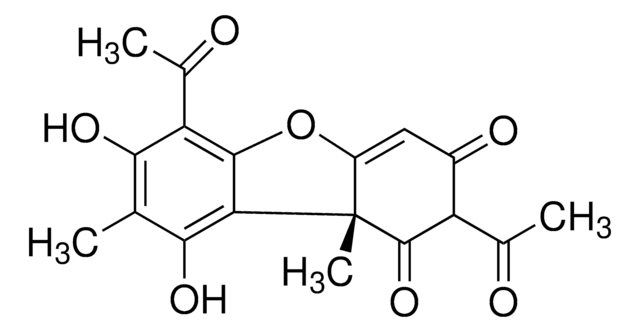09237
Myristicin
analytical standard
Synonym(e):
5-Allyl-2,3-methylendioxy-anisol, 6-Allyl-4-methoxy-1,3-benzodioxol
About This Item
Empfohlene Produkte
Qualität
analytical standard
Qualitätsniveau
Assay
≥97.0% (GC)
Haltbarkeit
limited shelf life, expiry date on the label
Methode(n)
HPLC: suitable
gas chromatography (GC): suitable
Anwendung(en)
food and beverages
Format
neat
Lagertemp.
2-8°C
SMILES String
COc1cc(CC=C)cc2OCOc12
InChI
1S/C11H12O3/c1-3-4-8-5-9(12-2)11-10(6-8)13-7-14-11/h3,5-6H,1,4,7H2,2H3
InChIKey
BNWJOHGLIBDBOB-UHFFFAOYSA-N
Suchen Sie nach ähnlichen Produkten? Aufrufen Leitfaden zum Produktvergleich
Allgemeine Beschreibung
Anwendung
- Leaf extracts of parsley, dill, and celery grown in microwave fields using high-performance thin-layer chromatography (HPTLC).
- Rat urine samples using gas chromatography coupled to mass spectrometry (GC-MS).
- Human serum samples using gas chromatography (GC) with flame ionization detection (FID).
Verpackung
Empfohlene Produkte
Signalwort
Warning
H-Sätze
Gefahreneinstufungen
Aquatic Chronic 3 - Repr. 2 - STOT SE 3
Zielorgane
Central nervous system
Lagerklassenschlüssel
10 - Combustible liquids
WGK
WGK 3
Flammpunkt (°F)
Not applicable
Flammpunkt (°C)
Not applicable
Persönliche Schutzausrüstung
Eyeshields, Gloves
Hier finden Sie alle aktuellen Versionen:
Besitzen Sie dieses Produkt bereits?
In der Dokumentenbibliothek finden Sie die Dokumentation zu den Produkten, die Sie kürzlich erworben haben.
Kunden haben sich ebenfalls angesehen
Unser Team von Wissenschaftlern verfügt über Erfahrung in allen Forschungsbereichen einschließlich Life Science, Materialwissenschaften, chemischer Synthese, Chromatographie, Analytik und vielen mehr..
Setzen Sie sich mit dem technischen Dienst in Verbindung.